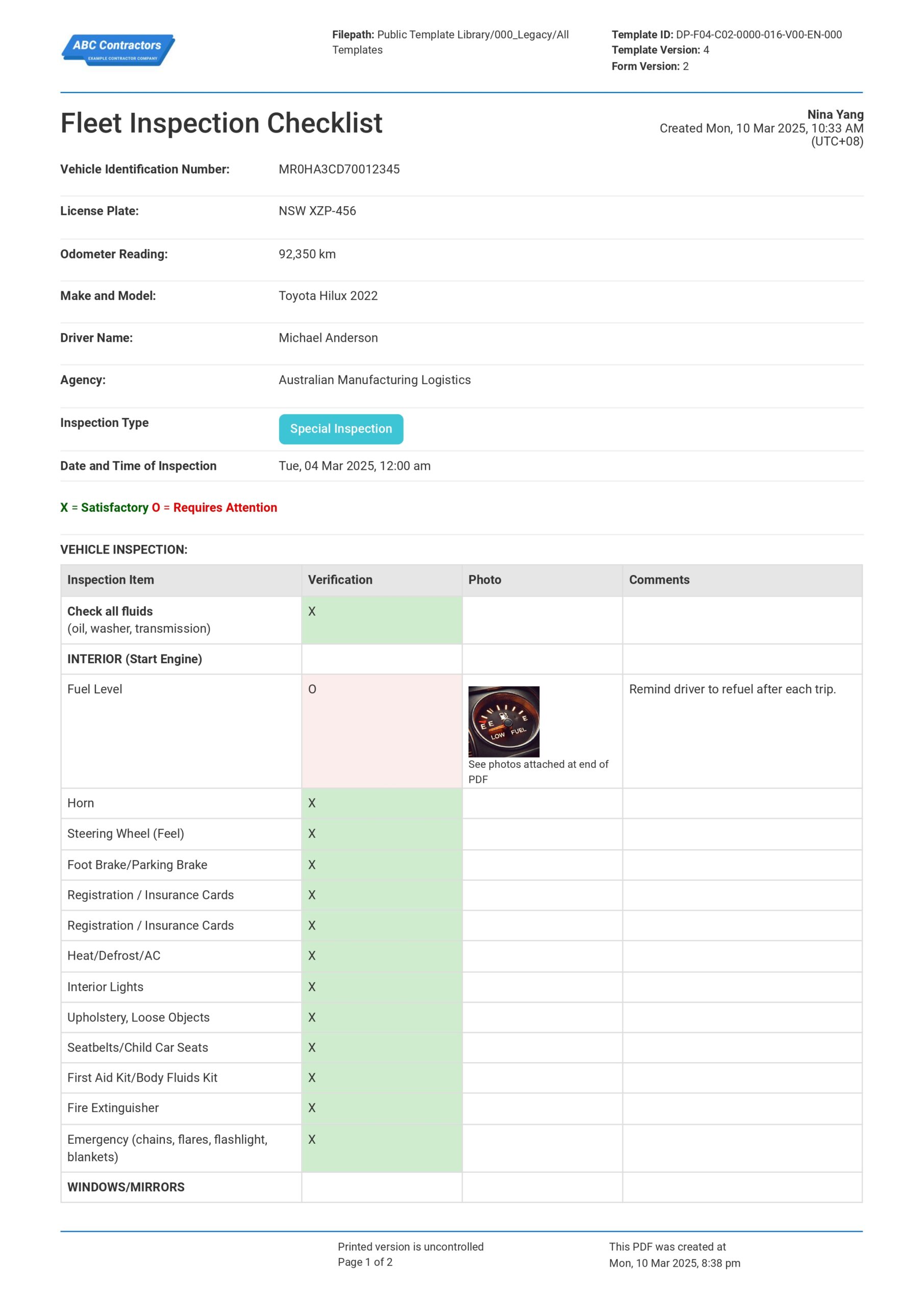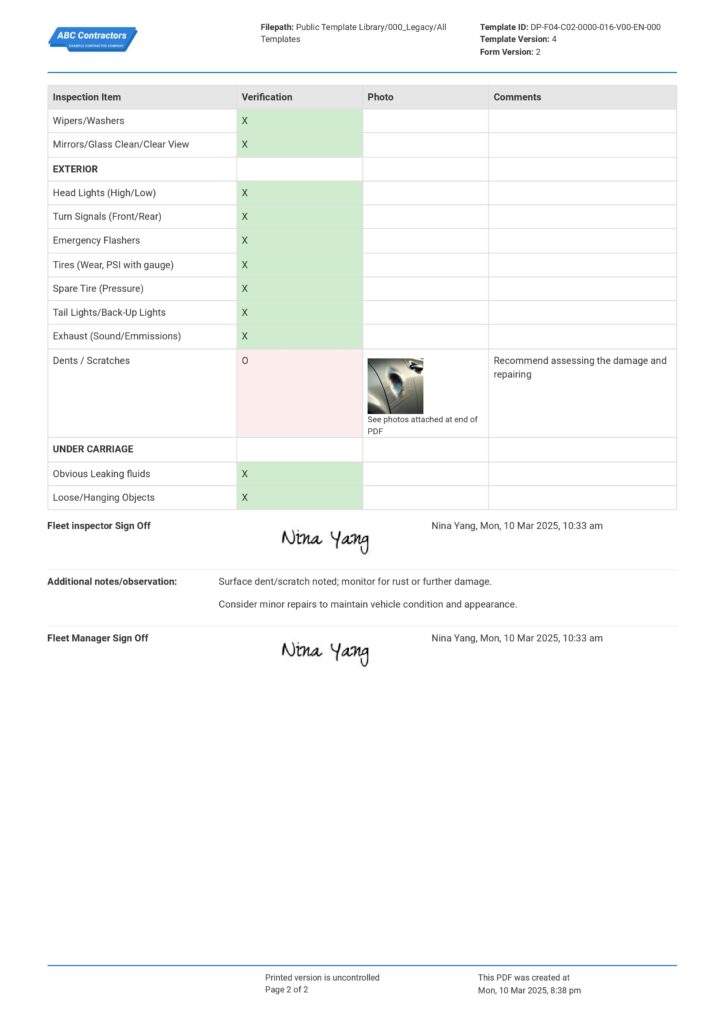Fleet Maintenance Best Practices
In this article, we’ll go over the most important fleet maintenance best practices, which help to reduce unexpected downtime, decrease operational costs, and improve fleet operations.

The impact of Good Fleet Maintenance
When a fleet is well maintained, it not only affects the operations of the company, but it also directly affects consumers. In logistics or transport, the responsibility of having goods delivered on time does not fall merely on good driving, better weather condition and less road accidents and traffic but goes back to how the fleet is well managed and how the vehicles are well-maintained. That is, when we’re driving an old car, you can’t just say that it doesn’t have any issues after several years and high mileage, because of the design but factors like maintenance play a crucial role.
In this article, we’ll go over the best practices to implement fleet maintenance that would ensure the expected outcome would ensure reduction of unexpected downtime, decrease operational costs and improve overall fleet operations.
If before jumping into fleet maintenance best practices, you want to better understand the full meaning of fleet management, you can read about that in more detail via the link.
Otherwise let's jump in.
Fleet Maintenance Best Practice 1. Have a good fleet manager
A good fleet manager would make a huge difference in fleet maintenance. While technically a fleet manager is a person and not a practice per se, having a manager that will handle all the central tasks of fleet maintenance can have a direct impact on the success of fleet operations making this a model strategy in every company.
Roles of fleet manager that directly affects fleet maintenance desired outcome.
- Creates and monitors maintenance schedule
- Facilitates fleet tracking and monitoring
- Fuel Management and Monitoring
- Manages driver and inspection personnel
- Budgeting and cost control
- Leads risk management and incident reporting
- Enforcement of policies
When you think about it, these tasks are the core elements of maintaining a seamless fleet. Thus, hiring a good manager that will facilitate these tasks is an optimal strategy.
2. Optimize driver management
Hiring competent drivers should be expected in the fleet industry, as it’s essential to ensure drivers are qualified, trained, and compliant. Fleet maintenance aims to keep vehicles in optimal condition and while drivers are not the ones who are responsible to inspect or maintain the car, they should have the technical understanding of the vehicle they are handling, they should be able to know practical troubleshooting like tire replacement and capable of doing pre-start inspections.
Ensuring driving management is optimized can be achieved in these ways:
- Plan out what skill drivers should have. Each country might have different requirements for drivers and apart from the high-level compliance requirements. It’s a fleet maintenance best practice that each organization has goals set on the type of driver they want to hire and what skill should they have.
- Implement internal trainings for drivers – Regularly train drivers to updated rules and regulations within the company or the areas they will transport to, for compliance purposes.
- Implement proper scheduling – There should be a proper scheduling to ensure driver’s license are up to date, as well as vehicle maintenance.
- Implement a way to remotely monitor the drivers on the road - Whether through software or constant communication with drivers. It’s important to closely monitor compliance of the drivers and at times to ensure they are awake while doing long haul to avoid accidents.
3. Develop a good fleet maintenance strategy
Developing a good strategy is vital for making fleet maintenance more efficient making it a fundamental best practice in the industry. This strategy does not only mean it achieves the basic goal of fleet maintenance which are minimizing downtime and practicing proactive maintenance but also about implementing disciplines that are often overlooked.
At its core, a well-made fleet maintenance strategy includes the following key elements and best practices:
1. No overlapping of preventive maintenance schedule. Preventive maintenance is supposed to be proactive in nature and supposed to be done prior to any issue. You can use a centralized calendar that can be viewed by all the personnels within the fleet after a fleet manager sets it up.
2. Inspectors must be both available and competent during scheduled inspections. It’s best practice to use a training plan to regularly verify competency.
3. Use a data-driven comparative analysis when building maintenance plans. For example, mileage vs repair costs or fuel efficiency vs maintenance frequency.
4. Streamline the fuel management of the fleet by implementing a system to track fuel usage and expenses like using fuel cards.
5. Set fleet maintenance key performance indicators (KPIs) such as vehicle downtime, maintenance costs, or fuel efficiency.
These 5 strategies are essential in building a solid fleet maintenance strategy that not only prevents breakdowns but matches your organization’s operational goals with cost-efficiency and reliability.
4. Utilize fleet maintenance software to handle the essential tasks of the fleet
Having a fleet maintenance software to manage inspection checklists, training records and other data would greatly benefit any fleet management, and also bake in fleet management best practice through making processes streamlined and standaradised.
Constantly improving by investing in digital tools and evolving with the industry, while supporting the fleet manager in using these tools marks a breakthrough for your fleet.
It would be ideal for the software to be all encompassing that can handle all the tasks of the fleet. However, today there are various types of software used in fleet maintenance and management that will cater to each job functions. This is totally acceptable, because using specialized software for each of tasks allows for effective optimization of each area of operations more effectively.
In selecting for a software to use, consider the nature of fleet operations. This software should be adaptable and can be used by both the drivers on the road and the fleet manager in the office. Features like mobile app and offline functionality are valuable qualities to watch out for.
Below are the types of software ideal to have in fleet maintenance:
- A software for digital checklists and other records - One major challenge in handling large fleets is keeping up with the number of inspections and its respective documentation especially when still using paper-based forms. Utilize a fleet maintenance app to handle these checklists, down to creating and assigning maintenance schedules for vehicles and mechanics, incident reporting, compliance and audit readiness and custom dashboards and analytics.
- Use a fleet management software - Fleet management goes above fleet maintenance. This software ideally should handle real-time GPS tracking, maintenance alerts, and fuel tracking and management.
- Use a software to handle diagnostic and telematics - For advance predictive maintenance, this software would gather real-time data using vehicle sensors to detect issues early and monitor health of the vehicles.
Some asset management softwares like Gearbelt can handle multiple aspects of the above, and combine them into an end-to-end asset management system.
Fleet Maintenance best practice documentation
Here is an example fleet maintenance inspection checklist that is built using a software that allows user to create and customize checklists and and manage documentation for more efficient fleet management.

Use this free Fleet Maintenance sheet for free
Final thoughts
All these best practices will help your organization streamline your fleet maintenance operations and manage your workforce. We could go on and on about the best practices you should do to optimize maintenance, improve driver management and effective strategies to handle your fleet. But in the end, it all boils down to strong leadership, clear coordination as well as the genuine willingness to improve your organization. One of the most important best practices in fleet maintenance having a positive attitude towards your work —it sets the foundation for everything else.

Equipment maintenance log
Improve how you log, track and conduct maintenance on your equipment.

Equipment calibration log
Document, monitor and schedule calibrations using this form and register template.

Driver vehicle inspection report
Keep your team following DVIRs by following this pre-built template.

